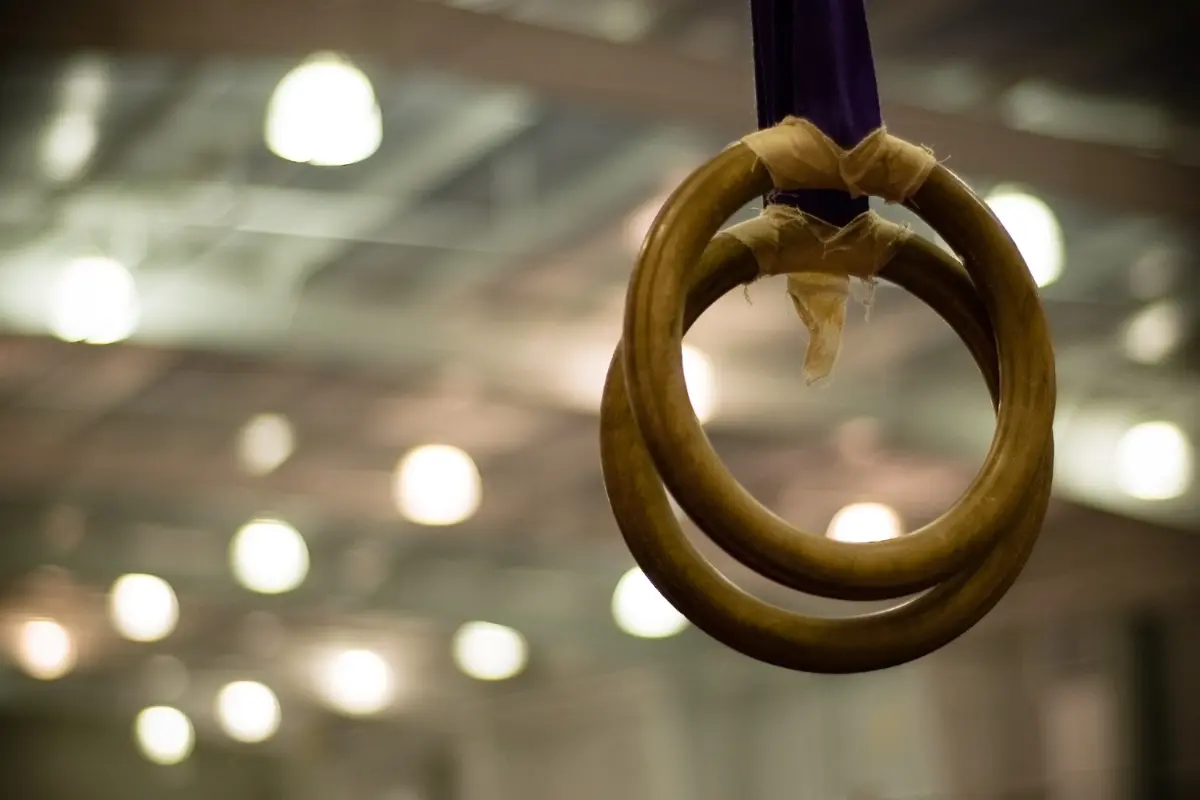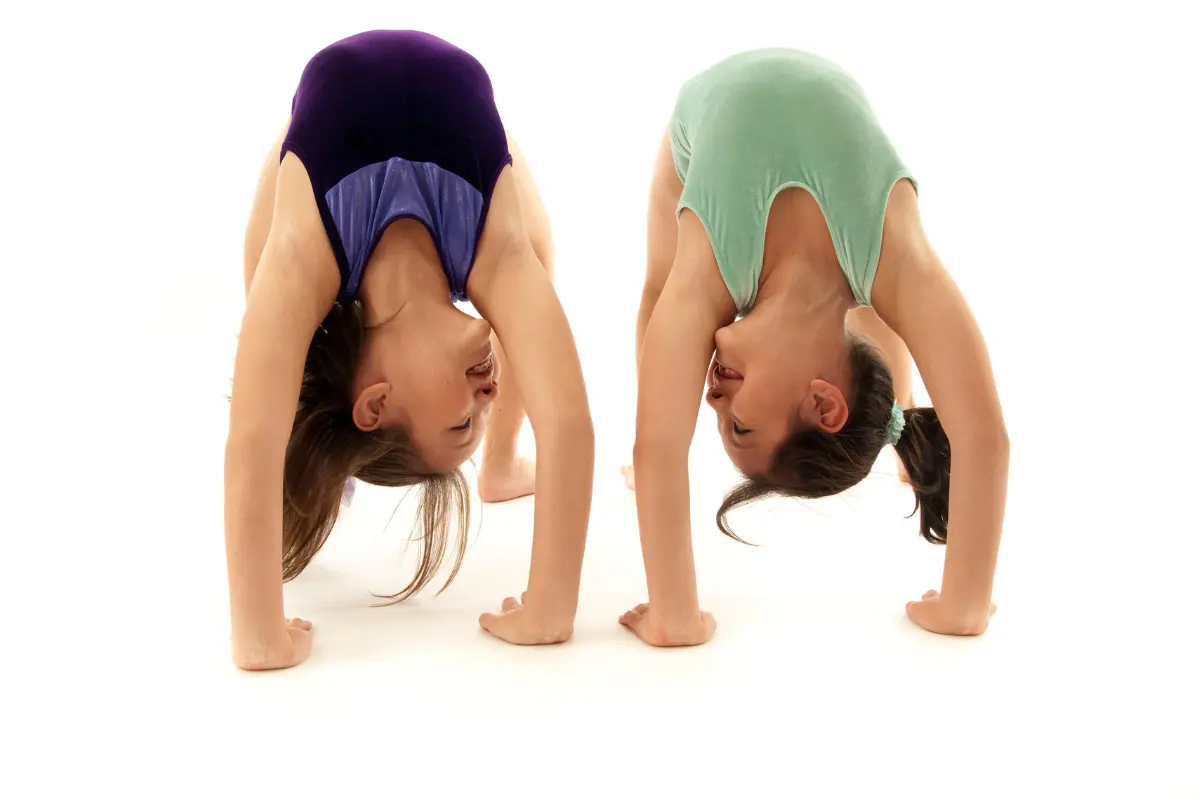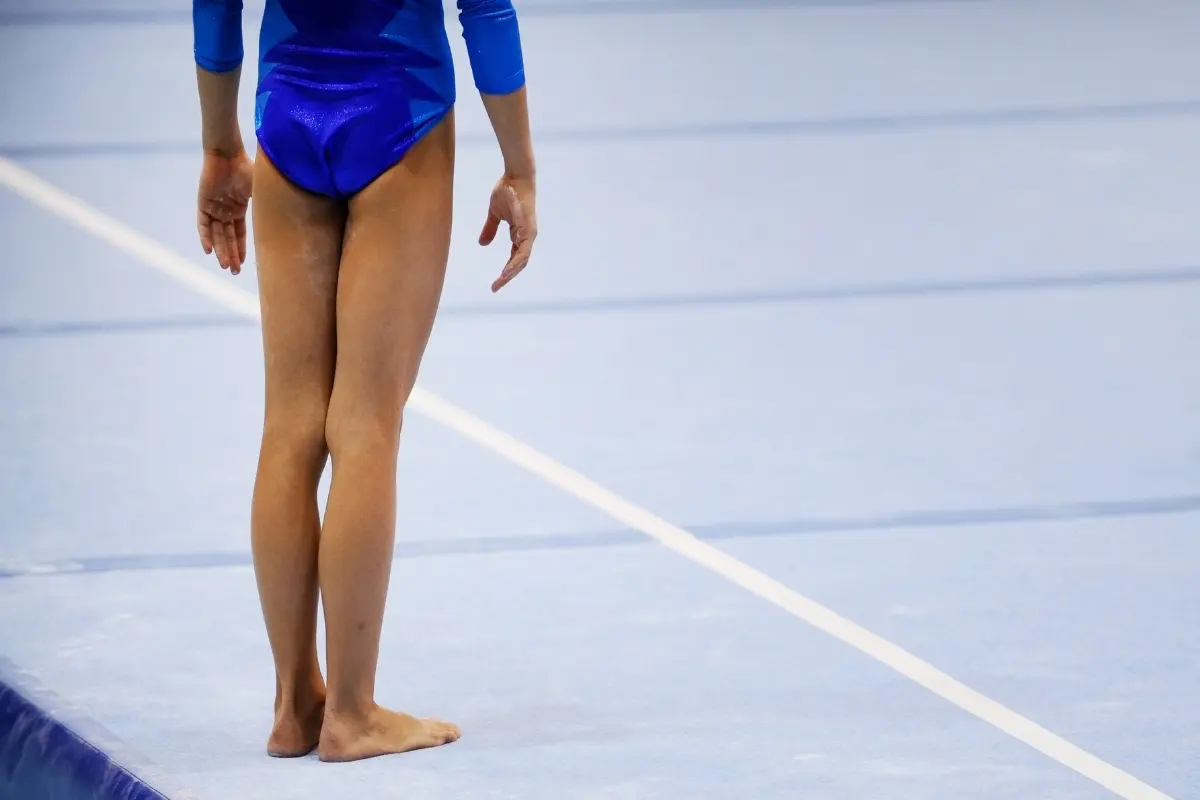The still rings, often simply called rings, are one of the most iconic and demanding events in men’s artistic gymnastics. A strong rings routine features static holds, controlled strength positions, and smooth transitions between them.
What Makes a Rings Position “Classic”?
Classic still rings positions are defined by control, not movement. In these holds, the gymnast must stop all motion and show clear, unmistakable strength.
A true classic position is held completely still for at least two seconds. The arms stay locked and stable, the rings remain controlled rather than swinging, and the body holds a clean, intentional shape. Nothing is rushed, and nothing relies on momentum.
What judges are looking for is pure strength under control. Because of this, classic rings positions form the backbone of rings strength development.
In this guide, we’ll walk through the most important classic positions, from foundational shapes beginners should know, up through the advanced strength moves seen at elite levels.
1. Fundamental Positions (Beginner)
Every strong rings athlete starts here. These foundational positions build straight-arm strength, body tension, and joint stability. Learning them well not only accelerates progress later, but also protects the shoulders and elbows as training becomes more demanding.
1. Support Hold
In a support hold, the gymnast suspends the body upright with arms fully extended and the rings held at the sides. The shoulders are pressed down, the chest is tall, and the body stays tight from shoulders to toes.
Because the rings move freely, this position trains more than just strength—it trains control. Compared to parallel bars, the rings demand much greater activation from the shoulders, chest, core, and grip to stay stable.
What it trains
- Shoulder depression and joint stability
- Straight-arm strength in the shoulders and triceps
- Core bracing and full-body tension
- Balance and ring control
Coaching cues
Keep the rings close to your sides and actively press the shoulders down. Brace the core and glutes to eliminate sway. A strong support hold sets the foundation for dips, muscle-ups, and all static strength positions.
2. Basic Hang
The basic hang is simply hanging from the rings with straight arms and the body suspended off the ground. While it can begin as a relaxed hang, it ideally becomes an active hang, with the shoulders engaged and the core braced.
The hang builds grip endurance, scapular control, and shoulder engagement, all of which are essential before learning swings, pulls, or strength holds. Because the rings are unstable, even this basic position activates muscles that aren’t challenged on a fixed bar.
Relaxed vs. active hang
- Relaxed hang: Useful early on to build grip comfort
- Active hang: Shoulders pulled slightly down and back, ribs tucked.
Coaching cues
Start with short holds (10–15 seconds) and build gradually. Keep the ribcage down and avoid shrugging the shoulders toward the ears.
3. Muscle-Up
A muscle-up combines a pull-up and a dip on the rings. The gymnast pulls from a hang, transitions the body over the rings, and finishes in a locked-out support above them.
The muscle-up is often the first true “full rings skill” athletes learn. It bridges basic hangs and supports with more advanced strength elements, combining pulling strength, pushing strength, and coordination in a single movement.
Phases of the skill
- Pull phase – Pull the chest toward the rings using lats, arms, and core
- Transition – Rotate the elbows back and bring the body over the rings
- Push phase – Press down into a stable straight-arm support
Coaching insight
Most coaches recommend mastering pull-ups, dips, and a solid support hold before attempting muscle-ups. Clean technique reduces injury risk and builds strength that carries over to advanced rings work.
2. Strength Holds (Intermediate / Advanced)
At this stage, rings training shifts toward static strength. These holds require the gymnast to suspend the body in a fixed position while resisting the natural instability of the rings. Each hold must remain motionless for at least two seconds.
1. Handstand
A rings handstand is an inverted static hold with the body aligned vertically. Head, shoulders, hips, and feet stacked, while balancing on freely hanging rings.
Unlike a floor handstand, the rings handstand requires constant stabilization. The shoulders, wrists, and core must make continuous micro-adjustments to prevent the rings from drifting. This makes it a cornerstone strength element in rings routines.
What it develops
- Straight-arm shoulder strength
- Shoulder stability under load
- Core control and body alignment
- Full-chain coordination from hands to toes
Training focus
Press actively through the shoulders, keep the core tight, and avoid arching or shrugging. Any break in alignment makes the rings harder to control.
2. Front Lever
The front lever is a horizontal hold where the gymnast’s body remains parallel to the ground, facing upward, with arms straight and the body rigid from shoulders to feet.
The front lever builds exceptional lat strength, core rigidity, and shoulder stability. Because the entire body must stay tight, even small breakdowns like bent arms or sagging hips cause the hold to fail.
What it develops
- Lats and upper back for horizontal suspension
- Core and glute engagement for body alignment
- Shoulder and grip strength under unstable load
Classic Static Ring Positions (Advanced)
These positions define elite rings strength. They are static, unforgiving, and technically precise. Any movement or instability is immediately visible.
1. Iron Cross
In the Iron Cross, the gymnast hangs upright with arms extended straight out to the sides, forming a “T” shape. The body remains vertical and motionless with elbows locked and shoulders stable.
The Iron Cross is one of the most recognizable symbols of rings mastery. It demonstrates extreme straight-arm strength and shoulder control and is rated as a B-level element in the FIG Code, with harder variations increasing difficulty.
Training note
The cross places heavy stress on the shoulders and elbows. Long-term progression and tendon conditioning are essential to avoid injury.
2. Maltese (Swallow)
The Maltese, or Swallow, is a horizontal hold with the body parallel to the ground at ring height and arms extended laterally. The entire body weight sits below the shoulders, dramatically increasing leverage.
Compared to the Iron Cross, the Maltese places far greater stress on the shoulders, elbows, and biceps tendons. It requires exceptional scapular control and full-body tension and carries a higher difficulty rating.
Training approach
Most gymnasts build toward Maltese through:
- Back lever and planche work
- Strong Iron Cross foundations
- Band-assisted or partial Maltese holds
Slow negatives and assisted work are commonly used to condition connective tissue safely.
Progressions & Training Tips
Rings demand stability, core tension, and controlled strength, and progress tends to be steady rather than explosive.
1) Start with the Basics and Build a Strong Foundation
Before moving on to harder holds, make sure the fundamentals are solid. These basics build strength and teach the body how to stay stable on the rings.
Focus on:
- Support holds and active hangs for shoulder control
- Grip endurance so fatigue doesn’t limit progress
- Simple scapular drills (like shoulder shrugs on rings)
- Straight-arm tension
Ring basics such as rows, push-ups, and dips are skills that form the base for everything else.
2) Progressive Loading Through Skill Variations
Most advanced ring skills are too hard to attempt all at once. Instead, work through easier versions that slowly increase the challenge.
Common progressions:
- Support hold → ring-turned-out (RTO) support → weighted RTO support
- Active hang → pull-up → false-grip pull-up
- Front lever progressions: tuck → one-leg → straddle → full
- Band-assisted static holds (like assisted Cross or Maltese)
Using bands and partial holds lets you practice the correct shape without putting too much stress on the shoulders and elbows too soon.
3) Train Both Strength and Stability
Rings are unstable by design. That means static strength alone isn’t enough, you must train your body to control instability.
How to build this:
- Include balance drills (e.g., small ring oscillations) with holds
- Practice straight-arm control rather than small bent-arm movements first
- Perform slow negatives (e.g., from support down toward an Iron Cross)
4) Reinforce Shoulder and Core Resilience
BeAdvanced rings skills put heavy stress on the shoulders and elbows, so joint support work is essential.
Helpful drills include:
- Scapular shrugs and shoulder depressions
- Hollow holds and basic core work
- Band shoulder rotations
- Light ring mobility and flexibility drills
Strength and mobility should be trained together to keep joints healthy.
5) Use Cycles and Periodization
Pushing maximum intensity all the time leads to overuse injuries. A smarter approach is to train in cycles:
- Strength blocks (3–6 weeks): Focus on building strength
- Skill blocks (2–4 weeks): Emphasize technique and transitions
- Recovery weeks: Reduce intensity to allow the body to adapt
This approach builds long-term strength while reducing injury risk.













